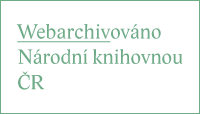Šichy jsou na území České republiky zastoupeny pouze dvěma taxony (Empetrum nigrum, E. hermaphroditum), patří ale mezi tzv. kritické druhy, které se jen velmi obtížně vzájemně odlišují. Celosvětově jsou šichovité druhově chudá skupina cévnatých rostlin (3 rody s asi 8 druhy) s jedinečným výskytem v mimotropické oblasti Eurasie a Severní a Jižní Ameriky, zcela chybí na africkém a australském kontinentu. Vyznačují se unikátní vazbou mezi pohlavností květů a stupněm ploidie - diploidní mají jednopohlavné květy a oddělené samčí a samičí rostliny, v rodu šicha jsou květy tetraploidů oboupohlavné. Plody šich bývají využívány podobně jako bobule ostatních vřesovcovitých pro vysoký obsah vitamínu C a různých cukrů, jsou také potravou řady živočichů, zejména ptáků.
Empetrum plants are represented in the territory of the Czech Republic by two taxa (Empetrum nigrum, E. hermaphroditum). They belong to what are called critical species, which are very difficult to distinguish apart. Empetraceae represent a group of vascular plants globally very poor in species (3 genera with approximately 8 species). They are distributed in Eurasia and North and South America outside their tropical regions, but they are totally missing in Africa and Australia. The unique interrelation between flower sexuality and the degree of ploidy is typical of them - diploid plants have unisexual flowers and separated male and female plants; in the genus Empetrum, the flowers of tetraploids are bisexual. Empetrum fruits are used in a similar way to the berries of other Ericaceae plants, mainly for the high content of vitamin C and various sugars. They also serve as feed for many animals, especially birds.
 Vzácnější (z obou druhů) šicha oboupohlavná (Empetrum hermaphroditium). Foto J. Suda
Vzácnější (z obou druhů) šicha oboupohlavná (Empetrum hermaphroditium). Foto J. Suda




